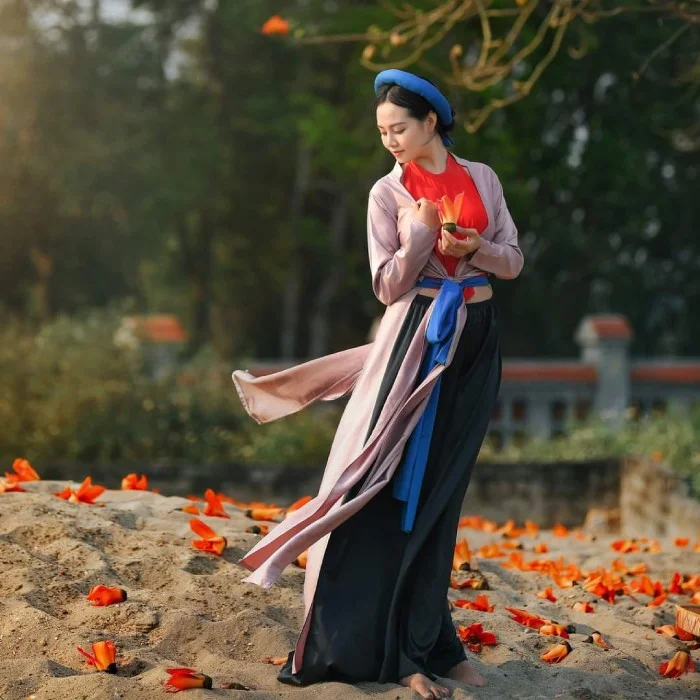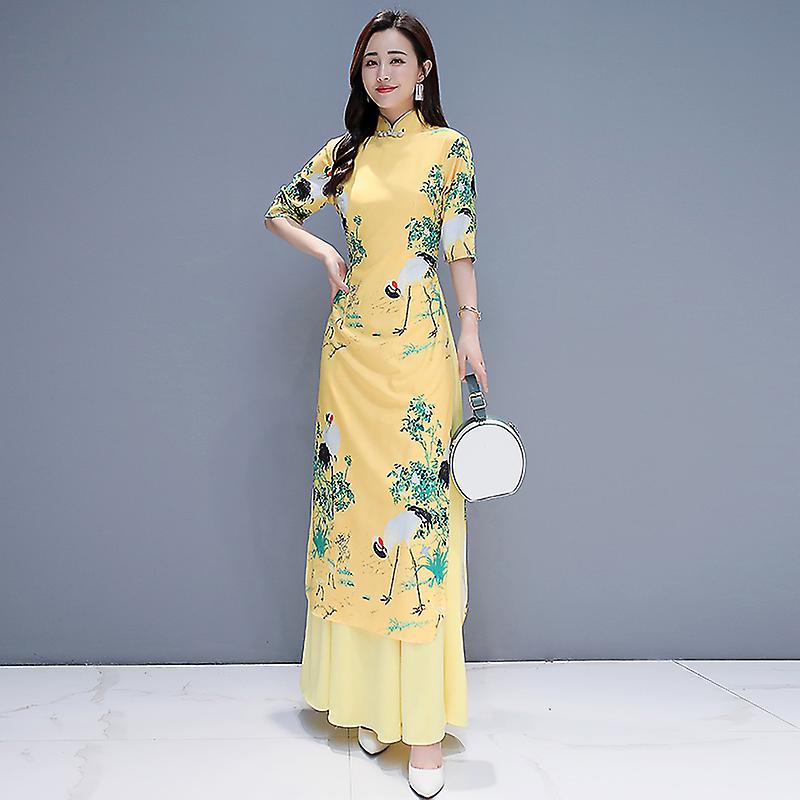Introducing the Rich Heritage of Vietnamese Clothing
Vietnamese clothing(Japanese:ベトナムの服) carries centuries of cultural significance. Traditional garments reflect the country’s diverse history. Ao dai, the national dress, embodies grace and elegance. It features a long gown worn over loose pants. Brocade fabrics showcase vibrant colors and patterns. Embroidery adds intricate details to each piece. Silk is prized for its smooth texture and luster. Fabrics come from different regions in Vietnam. Each area contributes unique designs and techniques. Vietnamese clothing often uses natural dyes for colorfastness. Artisans preserve age-old methods of dyeing. Handwoven textiles maintain a strong connection to heritage. Tailoring emphasizes fit and comfort for everyday wear. Festivals highlight the importance of traditional attire. Vietnamese clothing plays a significant role in celebrations. It symbolizes pride in one’s cultural identity. Garments evolve with changing fashion trends. Yet they retain elements that honor the past. Vietnamese clothing bridges tradition and contemporary style.

Embracing the Elegance of Ao Dai in Daily Life
Vietnamese clothing includes the iconic ao dai for daily life. Women often wear it for formal occasions or work. Men also adopt ao dai for important events. The garment fits closely around the torso. Slits on either side allow freedom of movement. Variations cater to different body types and preferences. Lighter materials suit warmer weather conditions. Darker hues signify respect during solemn ceremonies. Bright colors celebrate joyful festivities. Ao dai pairs well with non la, a conical palm leaf hat. Accessories enhance the overall look and feel. Sandals or shoes complement the outfit. Designers experiment with modern cuts and prints. Yet they keep traditional elements intact. Vietnamese clothing adapts to current lifestyles. Ao dai remains a symbol of Vietnamese femininity and elegance. It showcases the balance between old and new. Vietnamese clothing continues to inspire global fashion.
Discovering the Diversity of Regional Styles
Vietnamese clothing exhibits remarkable variation across regions and ethnic groups, each contributing to a vibrant tapestry of traditions. In North Vietnam, artisans create simple yet elegant designs that reflect a sense of refinement and modesty. In contrast, Central Vietnam boasts garments adorned with bold patterns and bright colors, showcasing the region’s spirited culture.
Southern Vietnamese styles prioritize practicality and comfort, ensuring that clothing meets the demands of daily life while remaining stylish. Meanwhile, the Highland ethnic groups inject their own unique flair into their attires. For instance, the Cham people wear sarongs and intricately embroidered blouses, which they design with careful attention to detail. Hmong women embrace vibrant layered skirts that express their community’s lively spirit, while Dao men proudly wear elaborate headgear and jackets that signify their cultural identity.

Each ethnic group works diligently to preserve distinct traditions through their clothing, celebrating their unique heritage. Local artisans play a crucial role in this endeavor, passionately passing down their knowledge of textile arts from generation to generation. Workshops emerge as important venues where young people learn essential skills in weaving and embroidery, ensuring that these traditional crafts continue to thrive.
Furthermore, exhibitions dedicated to regional differences in Vietnamese clothing highlight the richness of the country’s cultural diversity. Museums also contribute significantly to this educational mission by displaying historical garments that offer insights into the evolution of Vietnamese fashion over time. Visitors to these exhibitions and museums gain a deeper appreciation for the intricate relationships between clothing, culture, and history.
Showcasing Artisanal Craftsmanship in Textiles
Vietnamese clothing relies heavily on artisanal craftsmanship. Skilled artisans create exquisite handwoven fabrics. Intricate embroidery adorns many traditional garments. Beading adds sparkle to special occasion outfits. Batik printing produces stunning geometric patterns. Tie-dye techniques yield soft, flowing designs. Block printing creates repetitive motifs efficiently. Natural fibers like cotton and silk remain popular choices. Artisans source raw materials locally whenever possible. Sustainable practices minimize environmental impact. Vietnamese clothing supports local economies and communities. Artisans take pride in preserving ancient techniques. Younger generations learn these crafts through apprenticeships. Masterpieces emerge from dedicated hands and minds. Vietnamese clothing celebrates the artistry behind every stitch. It honors the labor and creativity invested in each piece. Artisans ensure the continuity of Vietnamese clothing traditions. Their work keeps alive the spirit of craftsmanship.
Modernizing Traditional Designs for Contemporary Living
Vietnamese clothing has increasingly embraced modernization to meet today’s dynamic lifestyle. Designers actively blend traditional elements with contemporary aesthetics, reinterpreting classic silhouettes to create fresh perspectives. For instance, newer collections showcase shorter versions of the ao dai, giving them a more casual and accessible vibe that resonates with modern wearers.
Additionally, sleeveless tops introduce a refreshing twist, perfect for warmer weather and a relaxed atmosphere. High-low hemlines bring a playful touch to outfits, while asymmetrical cuts add an exciting modern flair that captures the eye. Cropped jackets enhance versatility, allowing individuals to layer outfits effortlessly and adapt to changing temperatures.

Fabric innovations also play a crucial role in contemporary Vietnamese fashion. Designers now incorporate advanced technology, utilizing breathable materials that cater to the needs of active individuals thriving in urban environments. Furthermore, they integrate functional pockets into designs, addressing practical requirements without sacrificing style. In this spirit of modernization, zipper closures have become a popular alternative to traditional buttons, streamlining the dressing experience.
In a world increasingly focused on sustainability, many designers are also prioritizing eco-friendly options. This commitment to the environment not only caters to the modern consumer’s conscience but also reinforces the timelessness of Vietnamese clothing. By catering to evolving consumer tastes, Vietnamese fashion successfully attracts younger generations eager for novelty and distinction.
Highlighting the Role of Vietnamese Clothing in Cultural Celebrations
As the Mid-Autumn Festival draws near, children eagerly embrace the festivities, donning cheerful and festive attire that reflects the spirit of the occasion. Moreover, the excitement extends to dragon boat races, where teams sport coordinated uniforms, embodying teamwork and camaraderie in the thrilling competitions on the water.
Wedding ceremonies take on a majestic tone as families showcase opulent fabrics and stunning jewelry, emphasizing the importance of love and commitment. In contrast, funeral rites call for somber and respectful clothing that honors the memory of the departed, reflecting the deep respect Vietnamese culture holds for ancestors and loved ones.

Through these various events, Vietnamese clothing enhances the atmosphere, connecting individuals to their shared histories and the stories woven into each garment. Traditional attire evokes a sense of nostalgia and pride, reminding people of their roots and cultural identity. Customs surrounding clothing further reinforce community bonds, as neighbors and families come together to celebrate their heritage.
Promoting Sustainability Through Ethical Fashion Practices
<p>Vietnamese clothing promotes sustainable fashion practices widely. Brands prioritize eco-friendly production methods. Organic cotton reduces chemical use in farming. Recycled polyester lowers reliance on virgin resources. Biodegradable packaging minimizes waste generation. Fair trade principles ensure equitable compensation. Transparent supply chains build trust with consumers. Energy-efficient machinery lessens carbon emissions. Water conservation efforts protect natural resources. Vietnamese clothing addresses environmental concerns effectively. It aligns with global movements towards green living. Ethical fashion initiatives educate buyers about impacts. Consumers support brands committed to positive change. Vietnamese sets an example for responsible consumption. It advocates for a more sustainable fashion industry. By choosing Vietnamese, shoppers make conscientious decisions. Ethical fashion practices strengthen the appeal of Vietnamese. They highlight the commitment to preserving both culture and environment.

A Lasting Legacy of Vietnamese Clothing in Global Fashion
Vietnamese =”noopener”>clothing leaves a lasting legacy in global fashion. Its influence spans continents and cultures. International designers draw inspiration from Vietnamese styles. Elements like ao dai appear on runways worldwide. Fashion magazines feature Vietnamese models regularly. Social media platforms spread awareness quickly. Vietnamese clothing gains recognition for its uniqueness. Celebrities endorse garments through public appearances. Collaborations between Vietnamese and foreign brands increase. Exports bring traditional crafts to international markets. Vietnamese clothing becomes a symbol of cultural exchange. It opens doors for dialogue and understanding. Vietnamese enriches the global fashion conversation. It stands as a testament to the power of cultural expression. Through Vietnamese clothing, the world learns about Vietnam’s heritage. The legacy of Vietnamese clothing endures through continuous innovation. It remains a vital link between tradition and modernity. Vietnamese clothing continues to shape the future of fashion globally.
